
Rottnest Island, often colloquially referred to as "Rotto", is a 19-square-kilometre (7.3 sq mi) island off the coast of Western Australia, located 18 kilometres (11 mi) west of Fremantle. A sandy, low-lying island formed on a base of aeolianite limestone, Rottnest is an A-class reserve, the highest level of protection afforded to public land.
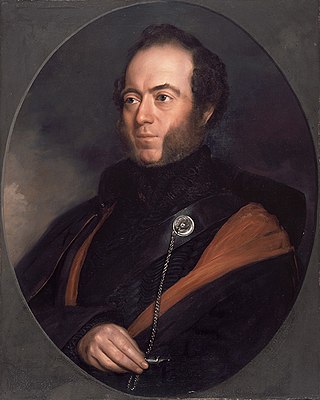
Sir Thomas Livingstone Mitchell, often called Major Mitchell, was a Scottish surveyor and explorer of Southeastern Australia. He was born in Scotland and served in the British Army during the Peninsular War. In 1827 he took up an appointment as Assistant Surveyor General of New South Wales. The following year he became Surveyor General and remained in this position until his death. Mitchell was knighted in 1839 for his contribution to the surveying of Australia.

William Buckley, also known as the "wild white man", was an English bricklayer, and served in the military until 1802, when he was convicted of theft. He was then transported to Australia, where he helped construct buildings for the fledgling penal settlement at Port Phillip Bay in what is now Victoria, Australia.

Manilla is a small town in New South Wales, Australia, located on Fossickers Way 45 kilometres northwest of the regional city of Tamworth and 27 kilometres northeast of the historic village Somerton. Manilla is famous for its setting as a fishing, paragliding, and mountain biking area. The name Manilla comes from the Gamilaraay word 'Maneela', which is said to mean 'meeting of the rivers'.

The Yolngu or Yolŋu are an aggregation of Aboriginal Australian people inhabiting north-eastern Arnhem Land in the Northern Territory of Australia. Yolngu means "person" in the Yolŋu languages. The terms Murngin, Wulamba, Yalnumata, Murrgin and Yulangor were formerly used by some anthropologists for the Yolngu.

The Myall Creek massacre was the killing of at least twenty-eight unarmed Aboriginal people by eight colonists on 10 June 1838 at the Myall Creek near the Gwydir River, in northern New South Wales. After two trials, seven of twelve accused colonists were found guilty of murder and sentenced to execution by hanging. The trials and guilty verdicts sparked extreme controversy within New South Wales settler society. This was one of the few alleged massacres of Aboriginals to have been proven in court. The leader of the perpetrators, free settler John Henry Fleming, evaded arrest and was never tried. Four men were never retried on additional charges following their acquittal in the first trial.

William Barak, named Beruk by his parents, the "last chief of the Yarra Yarra tribe", was the last traditional ngurungaeta (elder) of the Wurundjeri-willam clan, the pre-colonial inhabitants of present-day Melbourne, Australia. He became an influential spokesman for Aboriginal social justice and an important informant on Wurundjeri cultural lore.
The Caledon Bay crisis refers to a series of killings at Caledon Bay in the Northern Territory of Australia during 1932–34, referred to in the press of the day as Caledon Bay murder(s). Five Japanese trepang fishers were killed by Aboriginal Australians of the Yolngu people. A police officer investigating the deaths, Albert McColl, was subsequently killed. Shortly afterwards, two white men went missing on Woodah Island (with one body found later). With some of the white community alarmed by these events, a punitive expedition was proposed by Northern Territory Police to "teach the blacks a lesson".
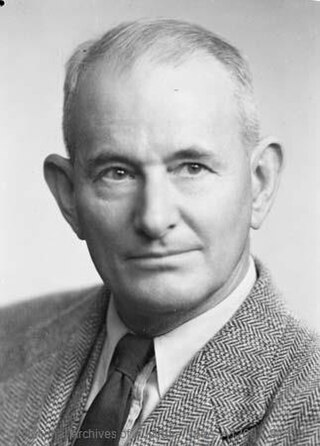
Charles Pearcy Mountford OBE was an Australian anthropologist and photographer. He is known for his pioneering work on Indigenous Australians and his depictions and descriptions of their art. He also led the American-Australian Scientific Expedition to Arnhem Land.

Australian native police were specialised mounted military units consisting of detachments of Aboriginal troopers under the command of White officers appointed by colonial governments. These units existed in various forms in colonial Australia during the nineteenth and, in some cases, into the twentieth centuries. From temporary base camps and barracks, Native Police were primarily used to patrol the often vast geographical areas along the colonial frontier in order to conduct indiscriminate raids and punitive expeditions against Aboriginal people. The Native Police proved to be a brutally destructive instrument in the disintegration and dispossession of Indigenous Australians. Armed with rifles, carbines and swords, they were also deployed to escort surveying groups, gold convoys and groups of pastoralists and prospectors.

The Gweagal are a clan of the Dharawal people of Aboriginal Australians. Their descendants are traditional custodians of the southern areas of Sydney, New South Wales, Australia.

The Australian frontier wars were the violent conflicts between Indigenous Australians and primarily British settlers during the colonial period of Australia.

George Augustus Frederick Elphinstone Dalrymple was a colonist, explorer, public servant and politician, member of the Legislative Assembly of Queensland. He founded the towns of Bowen and Cardwell, and pioneered the opening up of the Herbert, Burdekin, Johnstone and Daintree River regions to British colonisation. During this time he was responsible for many killings of Aboriginal people who lived in the area.

The Rufus River Massacre was a massacre of at least 30–40 Aboriginal people that took place in 1841 along the Rufus River, in the Central Murray River region of New South Wales. The massacre was conducted by a large group of South Australian Police, who were sent to the region by the Governor of South Australia, George Grey, after Indigenous warriors carried out a series of effective raids against settler overland drives. The police were augmented by armed volunteers and a separate party of overlanders who were already battling with Aboriginal people in the Rufus River area. The colony's Protector of Aborigines, Matthew Moorhouse, accompanied the punitive expedition. He was unsuccessful in his efforts to mediate a solution before the massacre occurred.

Mineng, also spelled Minang or Minanga or Mirnong, are an indigenous Noongar people of southern Western Australia.
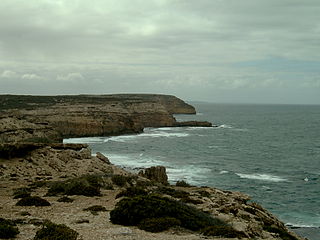
The Waterloo Bay massacre, also known as the Elliston massacre, was a clash between European settlers and Aboriginal Australians that took place on the cliffs of Waterloo Bay near Elliston, South Australia, in late May 1849. Part of the Australian frontier wars, the most recent scholarship indicates that it is likely that it resulted in the deaths of tens or scores of Aboriginal people. The events leading up to the fatal clash included the killings of three European settlers by Aboriginal people, the killing of one Aboriginal person, and the death by poisoning of five others by European settlers. The limited archival records indicate that three Aboriginal people were killed or died of wounds from the clash and five were captured, although accounts of the killing of up to 260 Aboriginal people at the cliffs have circulated since at least 1880.
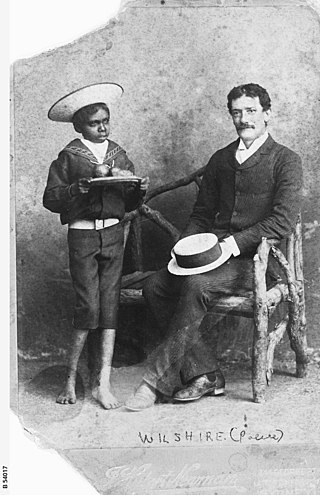
William Henry Willshire was an Australian police officer who worked in Alice Springs in the Northern Territory of Australia. He was the first police officer to be charged for murder in Australian history, after killing a group of Aboriginal people at Tempe Downs Station.
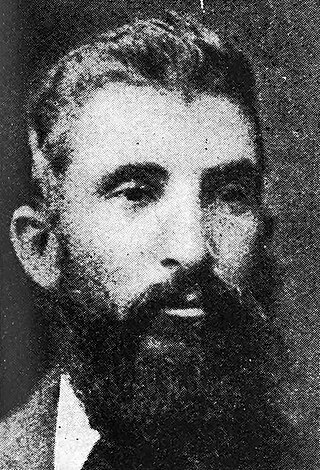
Robert Arthur Johnstone was an officer in the Native Police paramilitary force which operated in the British colony of Queensland. He was stationed at various locations in central and northern Queensland between 1867 and 1880 conducting regular punitive expeditions against clans of Indigenous Australians who resisted colonisation. He also participated in several surveying expeditions in Far North Queensland, including those under the leadership of George Elphinstone Dalrymple.

William Edington Armit was a soldier, sailor, Native Police officer in the British colony of Queensland, explorer, naturalist and colonial administrator in British New Guinea. Armit is regarded as one of the most violent officers of the paramilitary Native Police force.

















